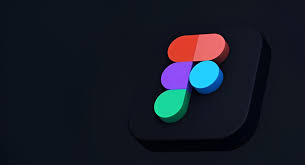Introduction
In the world of digital design, having a powerful and intuitive tool is essential for unleashing creativity and bringing ideas to life. Figma has emerged as a leading design tool that is revolutionizing the way designers collaborate, prototype, and create stunning user interfaces. In this blog, we will explore the features, benefits, and versatility of Figma, and how it has become a favorite among designers worldwide.
1. Cloud-Based Collaboration
One of the standout features of Figma is its cloud-based nature, which enables seamless collaboration among designers and stakeholders. With Figma, multiple team members can simultaneously work on a design project, make real-time edits, leave comments, and provide feedback. This collaborative environment promotes efficiency, enhances communication, and streamlines the design process.
2. Versatile Design and Prototyping
Figma offers a wide range of design and prototyping capabilities, making it a comprehensive tool for designers. From creating pixel-perfect UI designs to interactive prototypes, Figma provides an all-in-one solution. Designers can easily craft vector-based graphics, leverage advanced typography features, and create reusable design components to ensure consistency and efficiency in their workflow.
3. Responsive Design and Auto Layout
With the growing importance of responsive design, Figma offers powerful features that allow designers to create adaptive layouts. Figma's Auto Layout feature enables the creation of dynamic and responsive designs that automatically adjust to different screen sizes. Designers can easily set constraints and define how elements should behave when the layout changes, saving time and effort in designing for multiple devices.
4. Design Systems and Libraries
Figma's design systems and libraries empower designers to create and maintain consistent design elements and styles across projects. Design systems allow the creation of reusable components, colors, and typography styles, ensuring brand consistency and speeding up the design process. Libraries enable designers to share and collaborate on design assets, making it easier to manage and update design elements across different projects.
5. Prototyping and Interactive Transitions
Figma's prototyping features enable designers to bring their designs to life with interactive transitions and animations. Designers can create clickable prototypes, define user flows, and demonstrate the user experience to stakeholders. Figma's intuitive prototyping capabilities make it easy to showcase and validate designs before development, saving time and ensuring a seamless user experience.
6. Developer Handoff and Design Specs
Figma simplifies the handoff process between designers and developers by providing tools for generating design specs and assets. Designers can easily share design specifications, including measurements, colors, and typography, with developers. Figma's developer handoff features ensure accurate implementation of designs, reducing miscommunications and improving collaboration between designers and developers.
7. Third-Party Integrations and Plugins
Figma offers a range of third-party integrations and plugins, expanding its functionality and flexibility. Integrations with tools like Zeplin, Jira, and Slack facilitate seamless collaboration and workflow integration. Additionally, an extensive collection of plugins enhances productivity and allows designers to automate repetitive tasks, access design assets, and explore new design possibilities.
8. Community and Resources
Figma has a vibrant and active community of designers who share resources, tutorials, and design inspiration. The Figma Community allows designers to discover and remix design files, UI kits, and components created by other designers. This collaborative environment fosters learning, creativity, and growth within the design community. Don't forget to Checkout Our Digital Products
Conclusion
Figma has emerged as a powerful and versatile design tool, revolutionizing the way designers collaborate and create beautiful user interfaces. Its cloud-based collaboration, responsive design capabilities, design systems, prototyping features, developer handoff tools, and extensive integrations make it an indispensable tool for designers. With Figma, designers can streamline their workflow, enhance collaboration, and bring their creative vision to life with stunning and interactive designs.




Comments ()